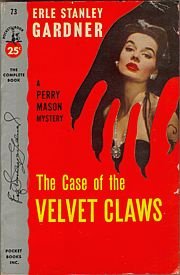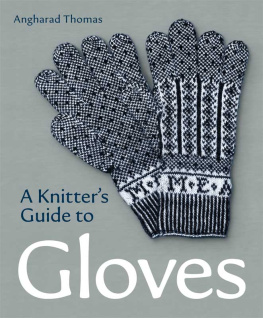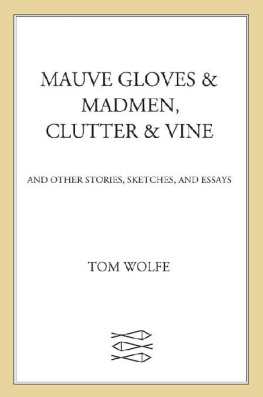
Praise
Its the kind of book I wish my own children could have read when they were in grade school, a moving story that deserves a place in every school library in this nation. Told in straightforward, readable prose, Fighter in Velvet Gloves is the biography of an Alaska Native woman who, despite adversity, never gave up as she struggled for equality. Both Native and Non-Native young people should be able to identify with Elizabeth Peratrovich, who fought her battles in the far north long before the Civil Rights movement in the American South caught fire.
Joseph Bruchac
Abenaki Author and Storyteller, author of Our Stories Remember
This is a story that deserves to be taught in every school in the country. In a powerfully graceful telling, Annie Boochever, with Roy Peratrovich Jr., paints an indelible portrait of the woman who forged the trail for the civil rights of Alaskas Native people. The courage of Elizabeth Peratrovich takes its place in the annals of American history as a precursor to the civil rights movement fought in the South decades later.
Debby Dahl Edwardson
National Book Award Finalist, author of My Name is Not Easy and Blessings Bead
From its apt title describing Elizabeth Peratrovich to the text outlining Elizabeths life and civil rights advocacy, Fighter in Velvet Gloves is a wonderful and much-needed review written especially for young readers. However, young and old will appreciate learning more about Elizabeth beyond her famous and often-quoted testimony supporting the passage of the Anti-Discrimination Act of 1945.
Rosita Worl (Yeidiklaskw and K aahni in Tlingit)
Sealaska Heritage Institute president and assistant professor of Anthropology, University of Alaska Southeast
We Tlingit people are sensitive about our stories, yet Annie Boochever has delicately managed this conundrum and, with Roy, has achieved a respectful and deeply honest telling of Elizabeths life. What I would have given to have had this inspiring book in my hands in my troubled youth.
Diane Benson
Assistant professor at the Department of Alaska Native Studies & Rural Development, University of Alaska Fairbanks
An inspiring book for our times, bringing to life real challenges overcome, and the enduring need to be vigilant to ensure rights gained are not erased.
Julie Kitka
President of the Alaska Federation of Natives
The ability to understand without condemnation, to accept our friends and enemies in the light of their weaknesses, is something we must acquire early in life in order to find happiness in this world.
Elizabeth Peratrovich
January 1957
Text 2019 Annie Boochever
Published by
University of Alaska Press
P.O. Box 756240
Fairbanks, AK 99775-6240
Cover and interior design by UA Press.
Cover image: Elizabeth Peratrovich, We Can Do It, acrylic on canvas by Apayo Moore, 2014. www.apayoart.com.
Library of Congress Cataloging in Publication Data
Names: Boochever, Annie, author.
Title: Fighter in velvet gloves : Alaska civil rights hero Elizabeth Peratrovich / by Annie Boochever ; in collaboration with Roy Peratrovich, Jr.
Description: Fairbanks, AK : University of Alaska Press, [2019] | Includes bibliographical references. |
Identifiers: LCCN 2018028794 (print) | LCCN 2018049028 (ebook) | ISBN 9781602233720 (ebook) | ISBN 9781602233706 (pbk. : alk. paper)
Subjects: LCSH: Peratrovich, Elizabeth, 19111958. | Tlingit IndiansAlaskaBiography. | Indians of North AmericaCivil rights.
Classification: LCC E99.T6 (ebook) | LCC E99.T6 B66 2019 (print) | DDC 323.1197dc23
LC record available at https://lccn.loc.gov/2018028794
Printed in the United States by Sheridan
ISBN-13: 978-1-60223-371-3 (electronic)
To TigerLily, Ayla Blue, and Harvey Dean
Table of Contents
Introduction
Native people thrived in Alaska for thousands of years before the first white fur traders arrived about the time of the American Revolution. By the end of World War II, the natural riches of Alaskaits great whales, fur-bearing wildlife, abundant salmon, ancient timber, and precious metalshad attracted wave after wave of newcomers. During that long period, the rights of Alaska Native peoplethe right to hunt and fish on their lands, to speak their languages, to practice their cultures, and to raise their children as they saw fitwere largely trampled, ignored, and, even worse, forbidden.
Today, the majority of the largest Alaska companies are owned by Alaska Natives, and members of Alaskas 229 federally recognized tribes manage a statewide system of tribal health organizations, the largest in the United States. An extensive network of Native-run cultural institutions preserves and celebrates Alaskas eight distinct Indigenous cultures. Dozens of policy and educational organizations help protect and advance Alaska Native peoples right to life, liberty, and the pursuit of happiness.
None of those things existed in 1911 when Elizabeth Wanamaker Peratrovich was born. Her generation of Alaska Native leaders planted the seeds of a civil rights revolution with their personal courage and commitment. This book celebrates all their efforts by telling the story of a woman who exemplified courage and commitment throughout her life. It is intended for middle school and high school students and their families.
Prologue
by Roy Peratrovich Jr.
I am the last remaining of Roy and Elizabeth Peratrovichs three children. This story includes personal details about my mother and our family that I have provided based on our family records and my personal recollections. In collaborating with the author, it was my hope to give the reader insight into not just the accomplishments of my mother but into who she was as a person.
Stella Martin, Yaan da yein, called my mother a fighter with velvet gloves. Stella was a Tlingit Indian from Kix (Kake, Alaska). She was a champion of equal rights and a woman of great accomplishment herself. She was also a good friend of Moms, and I think she got it right. When it came to fairness, justice, and the Alaska Native people, my mother was determined to stand her ground, but she would always do it with grace and dignity. The efforts of Stella, my parents, and many others came together on February 5, 1945, when my mother and father both testified before the Alaska Territorial Legislature in support of a bill to end racial discrimination in Alaska. Mom made the final remarks at the hearing.
Alaskans of all ages, Native and non-Native, stood shoulder to shoulder, some on chairs. It was only the second time in the history of America that a bill to end discrimination had come up for an official vote, and the federal Civil Rights Act of 1964 was still two decades away. Mom looked first to the gallery, then to the legislators behind their wooden desks. When she was confident she had everyones attention, she began to speak. This is the story of how my mother came to give a speech that helped Alaska lead all of America in the battle for civil rights.
1
Elizabeth Peratrovichs Parents














